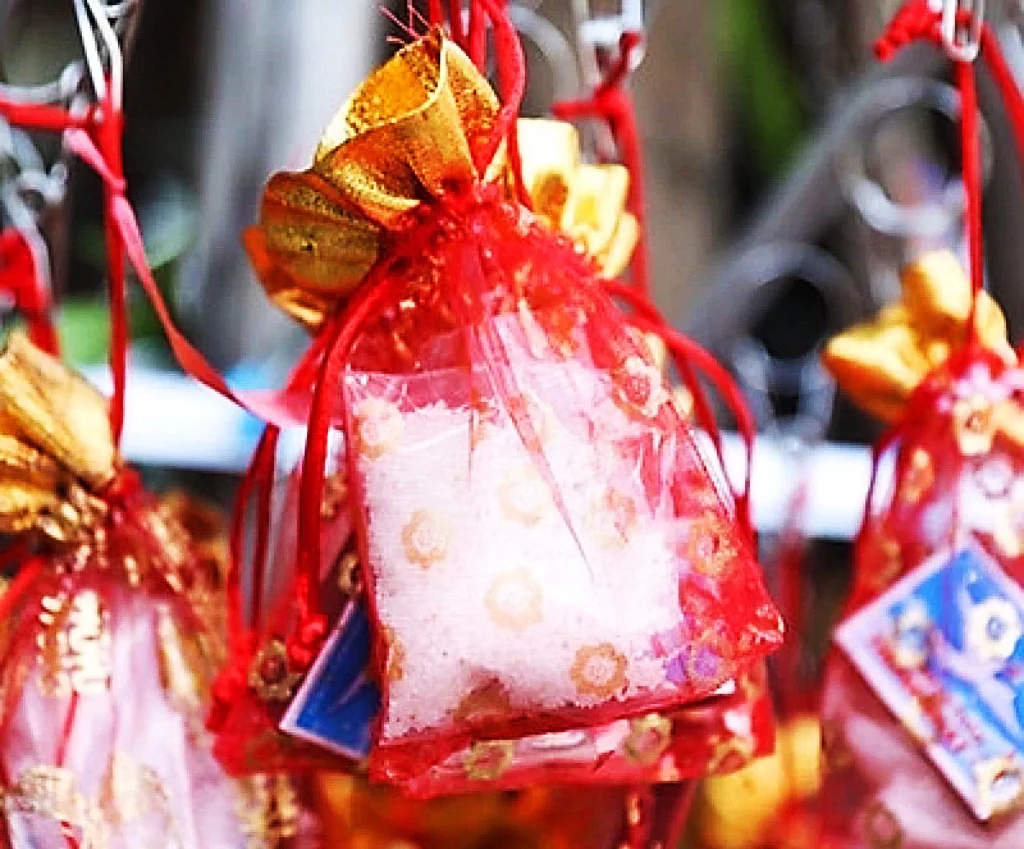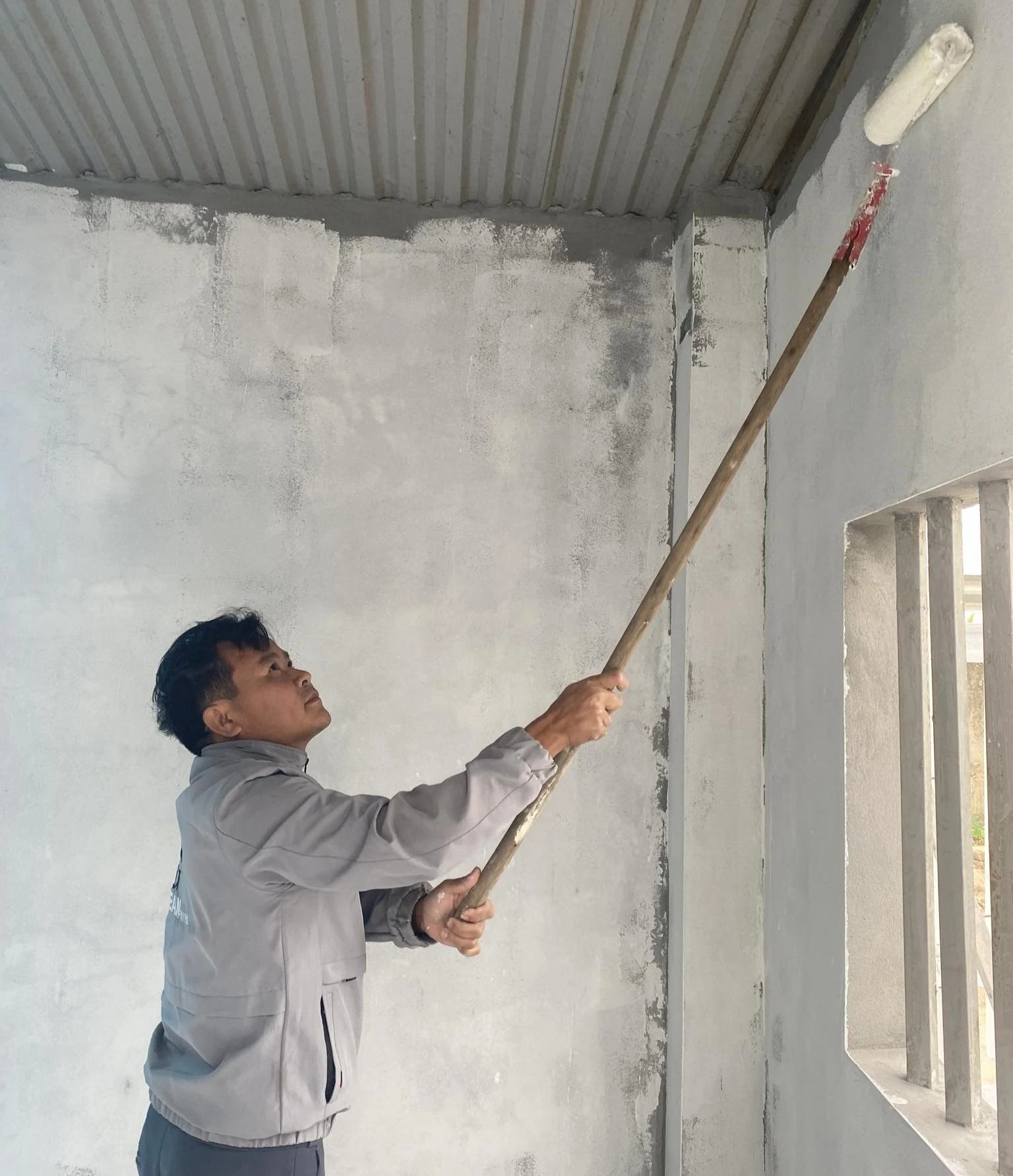{title}
{publish}
{head}
For generations, the custom of “buying salt at the beginning of the year, buying lime at the end of the year” has been a cherished cultural tradition among Vietnamese people, especially in the Northern Delta region, symbolizing their wishes for prosperity, happiness, luck, and success in the new year.
Along with rice, salt is a traditional spice essential in Vietnamese kitchens and a symbol of prosperity and abundance. In the past, people believed that salt could ward off misfortune and bring good luck to the homeowner. The custom of buying salt at the beginning of the year symbolizes family unity, harmony, and mutual care among loved ones. Additionally, it reflects the desire for strong and harmonious personal and business relationships.

People traditionally buy salt on New Year’s Eve.
At the beginning of the new year, some temples and pagodas display salt alongside fruits, votive paper, and incense lamps. After the ceremony, visitors can purchase a small bag of salt as a token of good luck. The salt sold on the first day of the new year is commonly known as "lucky salt."
After bringing the salt home, people often divide it into small bags for easy storage. Business owners often place small bags of salt on their counters as a wish for prosperity and good business. Likewise, travelers keep a small bag of salt in their luggage, believing it will ensure a safe journey.
Over time, people have become more concerned with the appearance of the salt they buy and sell. Sellers now carefully package salt in small, decorative bags or boxes, often tied with a ribbon.
Nguyen Kim Dung, a resident of Duu Lau Ward, Viet Tri City, said, "On the morning of the first day of Tet, my family always visits the temple and maintains the tradition of buying a small package of salt for each member. We believe this brings a lucky and peaceful start to the new year, ensuring that everything goes smoothly."

Salt is placed in a small red bag, symbolizing luck.
Unlike the custom of buying salt at the beginning of the year, people only buy limes at the year’s end. At the end of the year, pickup trucks drive along village roads selling limes. Families often buy lime to repaint their houses and gates, making them bright, clean, and neat in preparation for the New Year.
Lam Thao District is a region rich in cultural traditions, where much of the Northern Delta’s cultural heritage has been preserved for generations. At the end of the year, visitors to Lam Thao’s hamlets and villages can easily see families tidying their yards, wiping tables and chairs, whitewashing walls, painting, and cleaning doors and fences in preparation for Tet. Mr. Nguyen Hong Thai from Xuan Huy commune explained, "Our ancestors always believed that the house must be neat and clean before burning incense to invite them to celebrate Tet with their descendants. That’s why my family maintains the tradition of tidying and decorating the house before Tet every year."

As part of this tradition, Mr. Thai also whitewashed his house at the end of the year.
In the past, people believed that lime not only brightened and refreshed homes but also had disinfecting properties, eliminating bacteria, fungi, insects, and other pathogens in the soil. Beyond its practical uses, buying lime at the end of the year was also seen as a way to ward off bad luck and misfortune, welcoming the new year with joy and prosperity.
Nguyen Huu Nhan, a writer and folk culture researcher at the Provincial Literature and Arts Association, said, "The custom of “buying salt at the beginning of the year, buying lime at the end of the year” has been a cherished cultural tradition of the Vietnamese people for generations. This practice originates from daily life and work. Rooted in the belief that “worship brings sacredness, and abstinence brings goodness,” it also fulfills people’s spiritual needs."
Nowadays, although salt is no longer as essential in many households as it once was, it is readily available for purchase in any quantity. Lime is no longer the only choice for home renovation, but as Tet approaches, this tradition remains an essential part of people’s lives, much like the custom of placing a plate of salt and rice on the altar during worship. Betel leaves are lightly coated with lime and arranged on the altar alongside areca nuts.
Thu Huong

baophutho.vn At the end of the year, when the northeast monsoon brings the chilly cold of the highlands, the villages of Co Phay, Dieu Luong, and Dieu Noi...

baophutho.vn On the morning of December 23, Ms. Phung Thi Kim Nga – Vice Chairwoman of the Provincial People’s Committee, presided over a meeting to review...

baophutho.vn After the merger, the province now has a total of 979 ranked relics. Among these are 6 Special National Relic Sites: The Hung Kings Temple...

baophutho.vn From December 20 to 21, the Van Son Commune Culture, Sports, and Tourism Festival took place in a bustling and festive atmosphere. Tens of...

baophutho.vn Tien Lu Commune is not only a land rich in cultural traditions but also home to an ancient architectural monument - the Tien Lu Communal House....

baophutho.vn In the Muong Ramp and Muong Trac regions of Yen Thuy Commune, there is a folk festival that has been preserved and organized annually by the...

baophutho.vn In Tu Vu Commune, where the Muong ethnic group predominates, gongs and drums are cultural symbols inseparable from the spiritual and material...

baophutho.vn In the era of integration and development, amidst the proliferation of modern industrial products, Phu Tho Province has managed to preserve...

baophutho.vn Phu Tho is a land rich in cultural and historical heritage, home to numerous artifacts, relics, and national treasures of exceptional value....

baophutho.vn On December 8, 2017, at its 12th session, the UNESCO Intergovernmental Committee for the Safeguarding of Intangible Cultural Heritage...